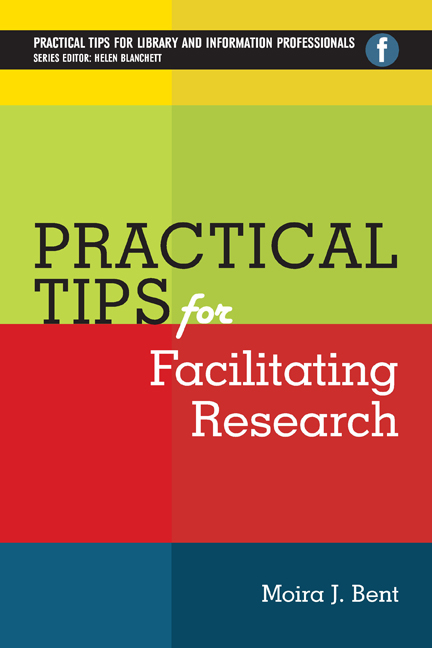Book contents
- Frontmatter
- Contents
- List of figures
- Series Editor's introduction
- Acknowledgements
- 1 Introduction
- 2 Section summaries
- 3 Landscapes and models
- 4 Structures and strategies
- 5 Places and spaces
- 6 Library staff roles
- 7 Collections
- 8 Specific interventions in the research process or lifecycle
- 9 Teaching approaches
- 10 Information literacy skills workshops and programmes
- 11 Bibliography
- Index
4 - Structures and strategies
Published online by Cambridge University Press: 08 June 2018
- Frontmatter
- Contents
- List of figures
- Series Editor's introduction
- Acknowledgements
- 1 Introduction
- 2 Section summaries
- 3 Landscapes and models
- 4 Structures and strategies
- 5 Places and spaces
- 6 Library staff roles
- 7 Collections
- 8 Specific interventions in the research process or lifecycle
- 9 Teaching approaches
- 10 Information literacy skills workshops and programmes
- 11 Bibliography
- Index
Summary
Collaborate with other sections of the organization
TOO OFTEN IN large organizations we can operate in a silo, looking at things from the safe perspective of our own experience and understanding. This can be especially true of the library, which has a clearly defined position. However, when considering how we might engage with researchers, it helps to consider which other sections of the institution might be trying to do the same thing and to see if there are synergies that you can exploit. A large university is likely to have a central research office, for example; do you know what they do and what their role is? The Research Information Network, as long ago as 2010, recommended closer liaison between libraries and other central bodies within the university (Research Information Network, 2010). What about the careers service – do they contribute to the research experience? Does the staff development section provide courses for research staff? Are there administrators and managers in faculties and departments specifically tasked with a research role? Does the IT section provide specific software or infrastructure for researchers?
By contacting staff in different sections, you may be able to identify duplication of effort or work together to provide a more holistic package of opportunities for researchers. A joined-up approach may involve some compromise and will certainly take time and energy to develop but your researchers will reap the benefits of a more rounded approach. Being more aware of who the key people are across the organization and knowing what their priorities are and what they are working on will help you to plan and inform your own activities.
In order to build these kinds of relationships we must have something to offer other sections as well as the research community, and as a minimum that can be a co-ordinating or signposting role, bringing together scattered or fragmented sections, explaining who does what and raising visibility. This is something many libraries already do unofficially, so formalizing collaboration will make it easier for both researchers and staff to identify different responsibilities and lead to a more streamlined approach.
- Type
- Chapter
- Information
- Practical Tips for Facilitating Research , pp. 43 - 66Publisher: FacetPrint publication year: 2016



